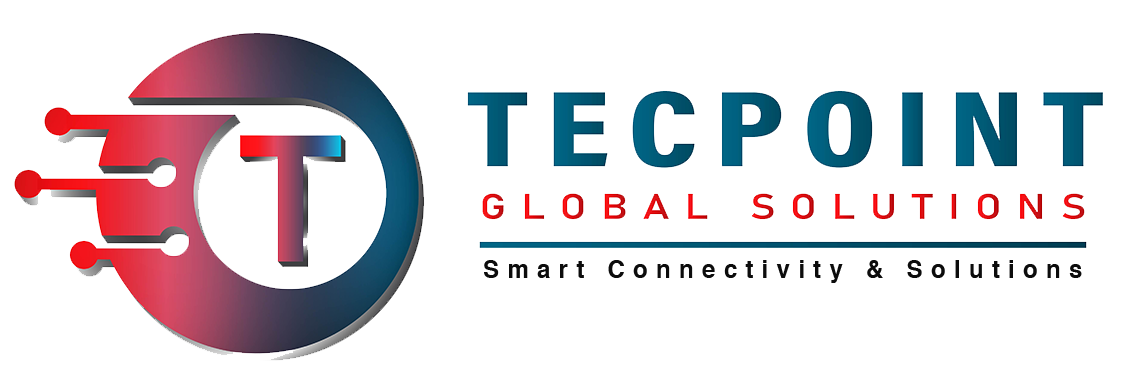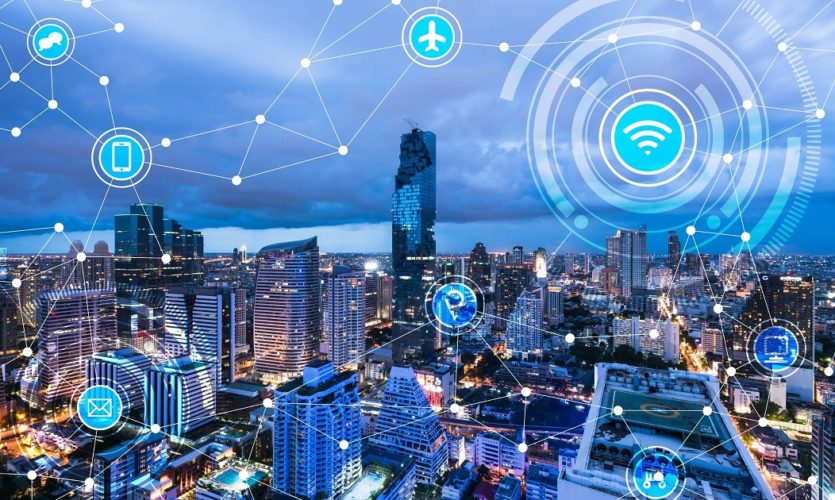Introduction:
The internet connection has come a long way since it was first invented in the late 1960s. Today, it is an integral part of our daily lives, enabling us to connect with each other, access information, and conduct business from virtually anywhere in the world. However, as more and more people and devices come online, the demand for internet bandwidth is constantly increasing. In this article, we will explore the latest developments in internet connection and how they are expected to impact internet bandwidth in the future. We will also discuss the challenges and opportunities that lie ahead as we strive to meet the growing demand for internet access. Whether you are a casual internet user or a tech-savvy professional, this article will give you a glimpse into the exciting future of the World Wide Web.
i) 5G Technology:
5G is the fifth generation of mobile networks, succeeding previous generations such as 2G, 3G, and 4G. 5G networks are expected to provide fast internet speed than previous networks. Being more dependable, with shorter response times and greater capacity.
As an enabler of Industry 4.0, it is dubbed “the network of networks” and is expected to unite many existing standards as well as cross different technologies and industries.
How does 5G work?
Wireless communications systems transmit data over the air using radio frequencies (also known as spectrum). 5G works in the same way, but on higher, less crowded Radio frequencies. This enables it to carry more data at a much faster rate. These higher bands are referred to as’millimeter waves’ (mmwaves). They were previously unlicensed, but regulators have made them available for licensing. They had largely gone unnoticed by the general public because the necessary equipment was both inaccessible and expensive.
Benefits of 5G
The most evident advantage of 5G networks over other previous generations of mobile technology is the speed of the network. However, there are also advantages relating to reduced latency – meaning faster response times as well as fast download speeds. This opens up a wealth of potential applications across industry due to improved operational efficiency.
3G has an average download speed of 8Mbps and a maximum of 384Kbps, while 4G has an average download speed of 32.5MBps and a maximum of 100Mbps. 4G+ has an average download speed of 42Mbps and a maximum download speed of 300Mbps. In comparison, 5G has a theoretical maximum of 1-10Gbps and an average download speed of 130-240Mbps.
Read more on internet speed test here
Challenges of 5G Technology
1) Huge Data Volume: As technology advances, the data volume of each network increases year after year, and the trend is continuing. Because many applications are capable of high-resolution video calling, live streaming, downloading, and so on, each network must support massive amounts of data. The new media trend is toward video standards, and video content is in high demand when compared to traditional text forms. For a better user experience, multimedia gaming, augmented reality (AR), and virtual reality (VR) applications require a faster network speed.
2) Ultra-low Latency Service:To ensure smooth operation, mission-critical applications and self-driving cars require ultra-low latency services. Any delay could have unanticipated and disastrous consequences in mission-critical applications. To satisfy medical applications such as remote surgeries, a latency of less than 1 millisecond must be achieved.
3) Ultra Reliability Network:Emergency services and applications necessitate a highly dependable network in order to immediately trigger warnings in critical situations. Health monitoring devices, remote patient care devices, fire and rescue services, police, and ambulance services, among others, necessitate the use of a wireless network to communicate, either self-activated or initiated by users.
ii) Fiber Optic Cables:
A fiber optic cable is a type of network cable that is made up of strands of glass fibers enclosed in an insulated casing. They are intended for high-performance data networking and telecommunications over long distances. Fiber optic cables have a higher bandwidth than wired cables and can transmit data over longer distances. Much of the world’s internet, cable television, and telephone systems rely on fiber optic cables.
The Benefits of Fiber Optic Cables over Copper Wires
· Fiber speed test shows that fiber optic cables transmit data at significantly faster rates than copper wires. This is due to the fact that the speed of light is greater than the speed of electrons.
· In comparison to copper wires, fiber optic cables have a much larger bandwidth of over 60 Tbps.
· Attenuation in fiber optic cables is extremely low. Repeaters are only required every 50 km, as opposed to every 5 km in copper wires.
· Electromagnetic interferences and power fluctuations have no effect on fiber optic cables. Power outages have little impact on them.
· Fiber optic cables are much more secure because they cannot be easily tapped.
· Because fiber cables are made of glass, they are very resistant to corrosive chemicals. As a result, they are better suited to harsh factory conditions than copper wires.
· Fiber optic cables are thin and light. A fiber cable weighs about 4 lbs/1000 ft, whereas copper cable weighs 39 lbs/1000 ft.
· Fiber cables have a much longer life cycle than copper cables, lasting 30-50 years.
Challenges of the Fiber Optic Cables
Fiber networks, like any other system, have flaws that can be difficult to manage if not properly managed. The initial investment may be higher. Long-term costs, on the other hand, are lower because fiber lasts longer. Furthermore, when information on a fiber optic network must travel a long distance, the system must constantly repeat at intervals.
Fragility
The main issue with the optical network is its brittleness. If wrapped around a short distance curve, it can break or have transmission issues; additionally, due to its fragile nature, it requires more protection than copper or other media.
Opportunities for expansion of Fiber optic cables
With the fiber network’s unlimited data capability, the future of communication is becoming brighter. There is no need to be concerned about how organizations will securely transfer large amounts of data over long distances without losing vital secret information to intrusion and theft.
iii) New Networking Protocols
The standardized rules and conventions that govern how devices communicate over a network are known as networking protocols. They define the rules for transmitting data between devices, as well as negotiating connections, establishing communication channels, and managing data transfer.
There are numerous networking protocols in use today, ranging from low-level protocols that handle physical data transmission over a network to high-level protocols that provide services like email and file transfer. IPv6 and HTTP/3 are two new networking protocols.
Benefits of IPv6 protocol:
1) Routing that is more efficient: IPv6 reduces the size of routing tables while increasing routing efficiency and hierarchical structure. IPv6 enables ISPs to combine the prefixes of their customers’ networks into a single prefix and broadcast it to the IPv6 Internet. Furthermore, in IPv6 networks, fragmentation is handled by the source device rather than the router, via a protocol for determining the maximum transmission unit of the path (MTU).
2) Directed Data Flows: Instead of broadcast, IPv6 supports multicast. Multicast enables bandwidth-intensive packet flows (such as multimedia streams) to be sent to multiple destinations at the same time, thereby conserving network bandwidth.
3) Security: IPv6 includes IPSec, which provides confidentiality, authentication, and data integrity. IPv4 ICMP packets are frequently blocked by corporate firewalls due to their potential to carry malware, but ICMPv6, the implementation of the Internet Control Message Protocol for IPv6, may be allowed because IPSec can be applied to ICMPv6 packets.
Benefits of HTTP/3
HTTP/3 is the newest member of the HTTP protocol family, and it is intended to replace HTTP/1, HTTP/2, and HTTP over QUIC. HTTP/3 is still in the works.
HTTP/3 provides faster connection speed, faster loading times, and a more stable connection. Based on UDP, HTTP/3 avoids TCP’s flaws while utilizing all of the benefits of HTTP/2 and HTTP over QUIC.
Challenges of the IPv6:
Concerns about security despite the numerous connection and performance improvements provided by IPv6, it is still quite vulnerable. The following are the primary security concerns in IPv6:
1) Dual-stacking: Dual-stack problems are not inherent to IPv6 but to the relationship between IPv4 and IPv6. In essence, the two infrastructures have their own specific security problems, which are only emphasized in dual stacks.
2) Header manipulation: Some attacks rely on header manipulation, and they are frequently countered by IP Security or IPSec and extension headers. However, this is not always a viable option because specific nodes, such as firewalls, can still become overburdened.
3) Flooding: Because of the size of the IPv6 address, scanning the entire segment is much more difficult and time-consuming than scanning IPv4. As a result, smurf-type attacks can be problematic, which is why it is recommended to filter out unnecessary traffic.
Conclusion
In conclusion, the future of internet connection looks bright, with many exciting developments and innovations on the horizon. As technology continues to advance and more people adopts internet connection, the demand for faster internet speed will only increase. In response, companies and organizations are working hard to develop new technologies and infrastructure to meet this demand. Some of the key trends that are expected to shape the future of internet connection include the widespread adoption of 5G, the continued expansion of fiber optic networks, and the development of new technologies such as MIMO and LEO satellites. These developments will help to deliver faster, more reliable, and more widely available internet connections to people all over the world. Overall, the future of internet connection is one of constant evolution and improvement, as we strive to stay connected and meet the ever-growing demand for high-quality internet access.

